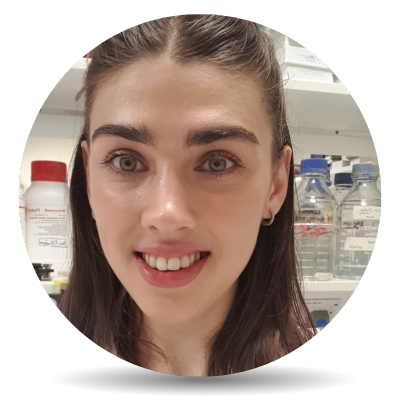BRUKER BRAIN DAY 2025:
Transmitting a Holistic View of Neuroscience Across Multiple Dimensions
Lorem ipsum dolor sit amet
Speakers




NOW ON DEMAND

Assistant Research Professor of Neurology
Stark Neurosciences Research Institute
Indiana University School of Medicine
Connecting form and function: Mapping microglial spatial biology in a mouse model of acute and chronic ischemic stroke

Bruker Spatial Biology
Multi-omic profiling of healthy and diseased brains with high-plex single-cell spatial molecular imaging
Using a mult-iomic approach with the CosMxTM Spatial Molecular Imager (SMI), first high-plex protein panel targets were imaged via cyclic in situ hybridization chemistry. Next RNA targets on the same tissue section were exposed then hybridized, and finally RNAs were imaged using the same chemistry. The human neuro protein panel targets are particularly well-suited for dissecting neurodegenerative disease pathology, including various phospho-tau species and amyloid beta variants. Moreover, the protein panel includes markers for diverse neural cell types and enables robust cell typing, especially alongside the over 4,900 neuroscience-related genes covered by the Human 6K Discovery Panel. RNA targets focus on over 80 pathways, cell typing, and key ligand-receptor interactions. To demonstrate the capability of the single-cell high-plex multi-omic technique, we collected data from sections of FFPE male human brains, with samples derived from frontal, parietal, and occipital lobes, as well as the precentral/ postcentral gyri and cerebellum, of healthy individuals and Alzheimer’s Disease patients.
Drawing on both the protein and RNA data, we achieved unparalleled segmentation of neurons and glia and increased transcript counts per cell. We also annotated cells with neuronal, glial, and vascular subtypes. By comparing RNA and protein expression, we identified genes and proteins with correlated and divergent patterns across our tissue space, highlighting the advantage of including the functional readout, protein, in understanding cell activity. Using open-source tools, we assigned cells into niches based on protein patterns and then applied differential expression models to identify genes and gene sets which varied based on niche for individual cell types. Overall, by applying the SMI multi-omic platform to human brain samples, we were able to simultaneously probe cell shapes, cell types, cell neighborhoods, and cell activity in one experiment on a single slide.

Bruker Spatial Biology
Heading
Lorem ipsum dolor sit amet, consectetur adipiscing elit. Sed sit amet finibus nulla. Integer a ligula viverra, dapibus mi eu, volutpat purus. Quisque at egestas neque, rhoncus posuere mi.
Heading
Lorem ipsum dolor sit amet, consectetur adipiscing elit. Sed sit amet finibus nulla. Integer a ligula viverra, dapibus mi eu, volutpat purus. Quisque at egestas neque, rhoncus posuere mi.
Heading
Lorem ipsum dolor sit amet, consectetur adipiscing elit. Sed sit amet finibus nulla. Integer a ligula viverra, dapibus mi eu, volutpat purus. Quisque at egestas neque, rhoncus posuere mi.
Heading
Lorem ipsum dolor sit amet, consectetur adipiscing elit. Sed sit amet finibus nulla. Integer a ligula viverra, dapibus mi eu, volutpat purus. Quisque at egestas neque, rhoncus posuere mi.
Heading
Lorem ipsum dolor sit amet, consectetur adipiscing elit. Sed sit amet finibus nulla. Integer a ligula viverra, dapibus mi eu, volutpat purus. Quisque at egestas neque, rhoncus posuere mi.
Heading
Lorem ipsum dolor sit amet, consectetur adipiscing elit. Sed sit amet finibus nulla. Integer a ligula viverra, dapibus mi eu, volutpat purus. Quisque at egestas neque, rhoncus posuere mi.
Heading
Lorem ipsum dolor sit amet, consectetur adipiscing elit. Sed sit amet finibus nulla. Integer a ligula viverra, dapibus mi eu, volutpat purus. Quisque at egestas neque, rhoncus posuere mi.
Heading
Lorem ipsum dolor sit amet, consectetur adipiscing elit. Sed sit amet finibus nulla. Integer a ligula viverra, dapibus mi eu, volutpat purus. Quisque at egestas neque, rhoncus posuere mi.
Heading
Lorem ipsum dolor sit amet, consectetur adipiscing elit. Sed sit amet finibus nulla. Integer a ligula viverra, dapibus mi eu, volutpat purus. Quisque at egestas neque, rhoncus posuere mi.
Heading
Lorem ipsum dolor sit amet, consectetur adipiscing elit. Sed sit amet finibus nulla. Integer a ligula viverra, dapibus mi eu, volutpat purus. Quisque at egestas neque, rhoncus posuere mi.
Heading
Lorem ipsum dolor sit amet, consectetur adipiscing elit. Sed sit amet finibus nulla. Integer a ligula viverra, dapibus mi eu, volutpat purus. Quisque at egestas neque, rhoncus posuere mi.
Heading
Lorem ipsum dolor sit amet, consectetur adipiscing elit. Sed sit amet finibus nulla. Integer a ligula viverra, dapibus mi eu, volutpat purus. Quisque at egestas neque, rhoncus posuere mi.
Lorem Ipsum Dolor Sit Amet
Lorem ipsum dolor sit amet, consectetur adipiscing elit. Sed sit amet finibus nulla. Integer a ligula viverra, dapibus mi eu, volutpat purus. Praesent posuere et risus nec bibendum. Curabitur quam nibh, maximus lobortis tortor ac, congue pulvinar augue. Pellentesque pretium mauris eget imperdiet laoreet.
Lorem Ipsum Dolor Sit Amet
Lorem ipsum dolor sit amet, consectetur adipiscing elit. Sed sit amet finibus nulla. Integer a ligula viverra, dapibus mi eu, volutpat purus. Praesent posuere et risus nec bibendum. Curabitur quam nibh, maximus lobortis tortor ac, congue pulvinar augue. Pellentesque pretium mauris eget imperdiet laoreet.
Join us in a celebration of science that brings together fit for purpose neuroscience solutions from Bruker Spatial Biology platforms.
-
Discovering Novel Biomarkers: Learn about new biomarkers for cerebral small vessel disease (cSVD) and their role in diagnosing dementia with the nCounter® Analysis Platform.
-
Exploring Microglial Function: Hear about the mapping of microglial morphology and function in ischemic stroke recovery with the CosMx® Neuroscience Protein Panel.
-
Integrating Multiomic Data: Gain insights into high-plex single-cell spatial molecular imaging with CosMx SMI for comprehensive neural analysis.
Heading
Lorem ipsum dolor sit amet, consectetur adipiscing elit. Sed sit amet finibus nulla. Integer a ligula viverra, dapibus mi eu, volutpat purus. Quisque at egestas neque, rhoncus posuere mi.
Heading
Lorem ipsum dolor sit amet, consectetur adipiscing elit. Sed sit amet finibus nulla. Integer a ligula viverra, dapibus mi eu, volutpat purus. Quisque at egestas neque, rhoncus posuere mi.
Heading
Lorem ipsum dolor sit amet, consectetur adipiscing elit. Sed sit amet finibus nulla. Integer a ligula viverra, dapibus mi eu, volutpat purus. Quisque at egestas neque, rhoncus posuere mi.
Heading
Lorem ipsum dolor sit amet, consectetur adipiscing elit. Sed sit amet finibus nulla. Integer a ligula viverra, dapibus mi eu, volutpat purus. Quisque at egestas neque, rhoncus posuere mi.
Heading
Lorem ipsum dolor sit amet, consectetur adipiscing elit. Sed sit amet finibus nulla. Integer a ligula viverra, dapibus mi eu, volutpat purus. Quisque at egestas neque, rhoncus posuere mi.
Heading
Lorem ipsum dolor sit amet, consectetur adipiscing elit. Sed sit amet finibus nulla. Integer a ligula viverra, dapibus mi eu, volutpat purus. Quisque at egestas neque, rhoncus posuere mi.
Heading
Lorem ipsum dolor sit amet, consectetur adipiscing elit. Sed sit amet finibus nulla. Integer a ligula viverra, dapibus mi eu, volutpat purus. Quisque at egestas neque, rhoncus posuere mi.
Heading
Lorem ipsum dolor sit amet, consectetur adipiscing elit. Sed sit amet finibus nulla. Integer a ligula viverra, dapibus mi eu, volutpat purus. Quisque at egestas neque, rhoncus posuere mi.
Heading
Lorem ipsum dolor sit amet, consectetur adipiscing elit. Sed sit amet finibus nulla. Integer a ligula viverra, dapibus mi eu, volutpat purus. Quisque at egestas neque, rhoncus posuere mi.
Heading
Lorem ipsum dolor sit amet, consectetur adipiscing elit. Sed sit amet finibus nulla. Integer a ligula viverra, dapibus mi eu, volutpat purus. Quisque at egestas neque, rhoncus posuere mi.
Heading
Lorem ipsum dolor sit amet, consectetur adipiscing elit. Sed sit amet finibus nulla. Integer a ligula viverra, dapibus mi eu, volutpat purus. Quisque at egestas neque, rhoncus posuere mi.
Heading
Lorem ipsum dolor sit amet, consectetur adipiscing elit. Sed sit amet finibus nulla. Integer a ligula viverra, dapibus mi eu, volutpat purus. Quisque at egestas neque, rhoncus posuere mi.
BONUS EVENT: Retinal changes associated with cerebral small vessel disease
|
With the rapidly expanding aging population, and the incidence of dementia expected to grow with this population, developing sensitive and accessible biomarkers that reveal the pathophysiology occurring in the brain is imperative. Currently, the two leading causes of dementia, Alzheimer’s disease (AD) and vascular contributions to cognitive impairment and dementia (VCID), are best diagnosed clinically with either costly PET or MRI scans and relatively nonspecific neuropsychological evaluations. Since some of these methods lack sensitivity and specificity, there is a clear need to develop novel biomarkers and understand how said biomarkers reflect underlying disease mechanisms. While rapidly emerging plasma biomarkers are gaining traction and specificity for AD, there is a lack of markers for VCID, in particular cerebral small vessel disease (cSVD), the most common VCID pathology.The retina has become a promising biomarker for AD and VCID, but the specific mechanisms underlying retinal changes that reflect brain disease are unclear. |
 |
|
|
Using our model of hyperhomocysteinemia (HHcy)-induced cSVD, we aimed to identify the effects of cSVD on visual sensitivity and cognition, retinal glial and vascular cells, and neuroinflammatory and cardiovascular gene expression changes. Ultimately, HHcy led to visual deficits that specifically affected the reaction to blue and white light, decreased vascular volume and decreased interaction of microglia with the vasculature, as well as the downregulation of inflammatory and vascular genes. These changes provide novel insights and reproduce some prior observations. These studies highlight retinal changes in association with cSVD and serve as a precaution when interpreting vision-dependent cognitive testing of cSVD models. |
|
Bridget Ashford Post Doctoral Research Associate University of Sheffield |



